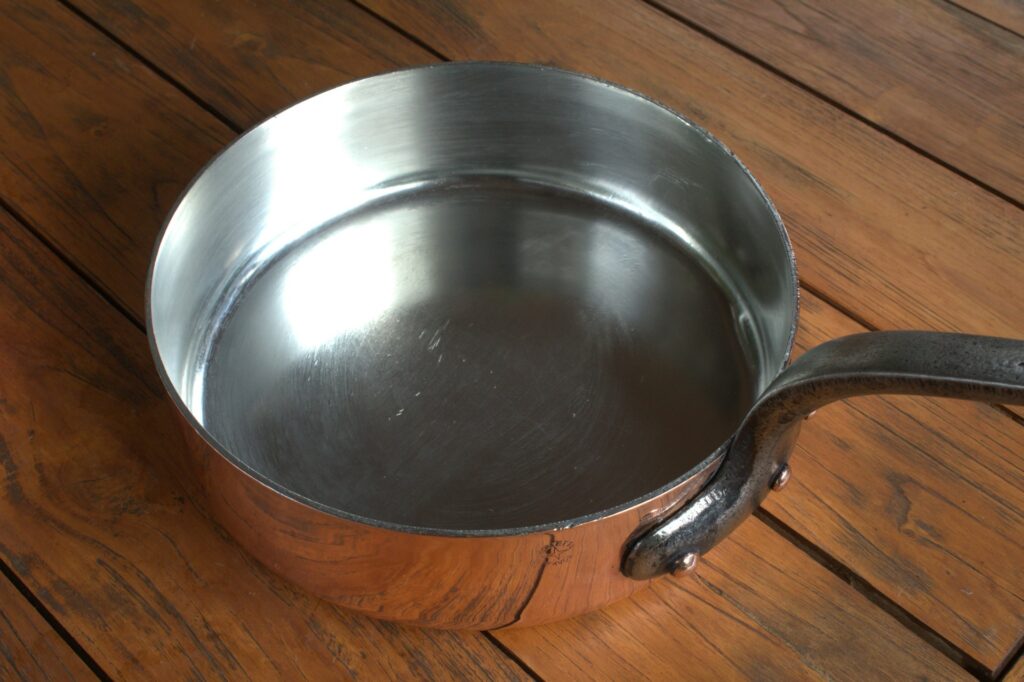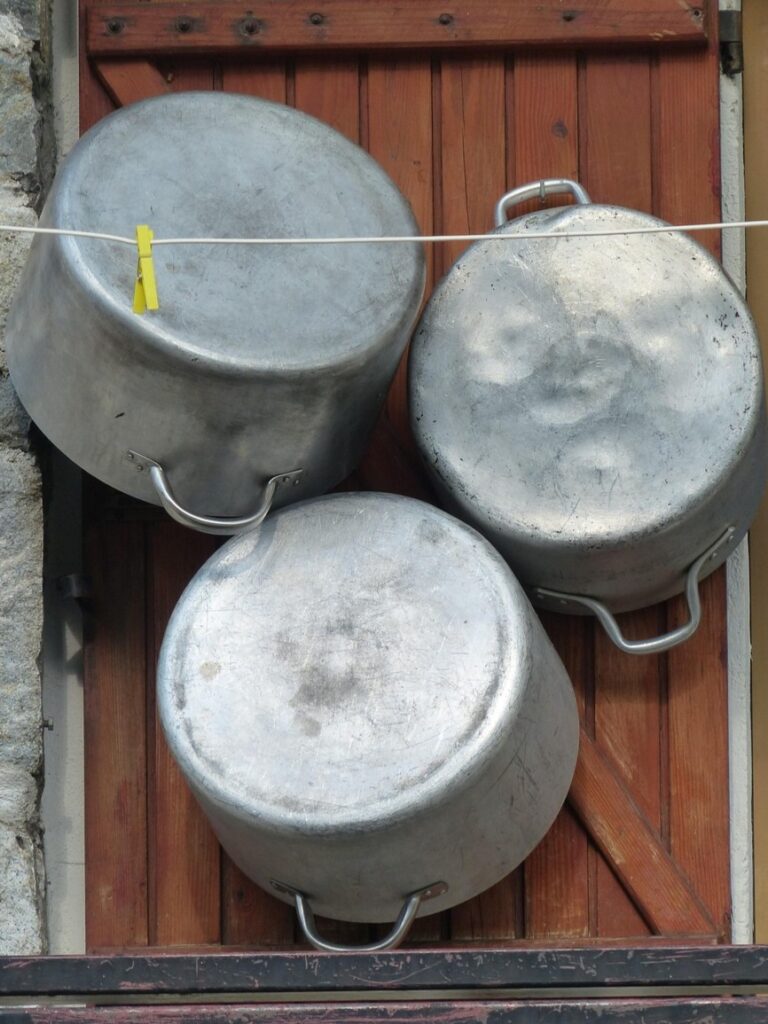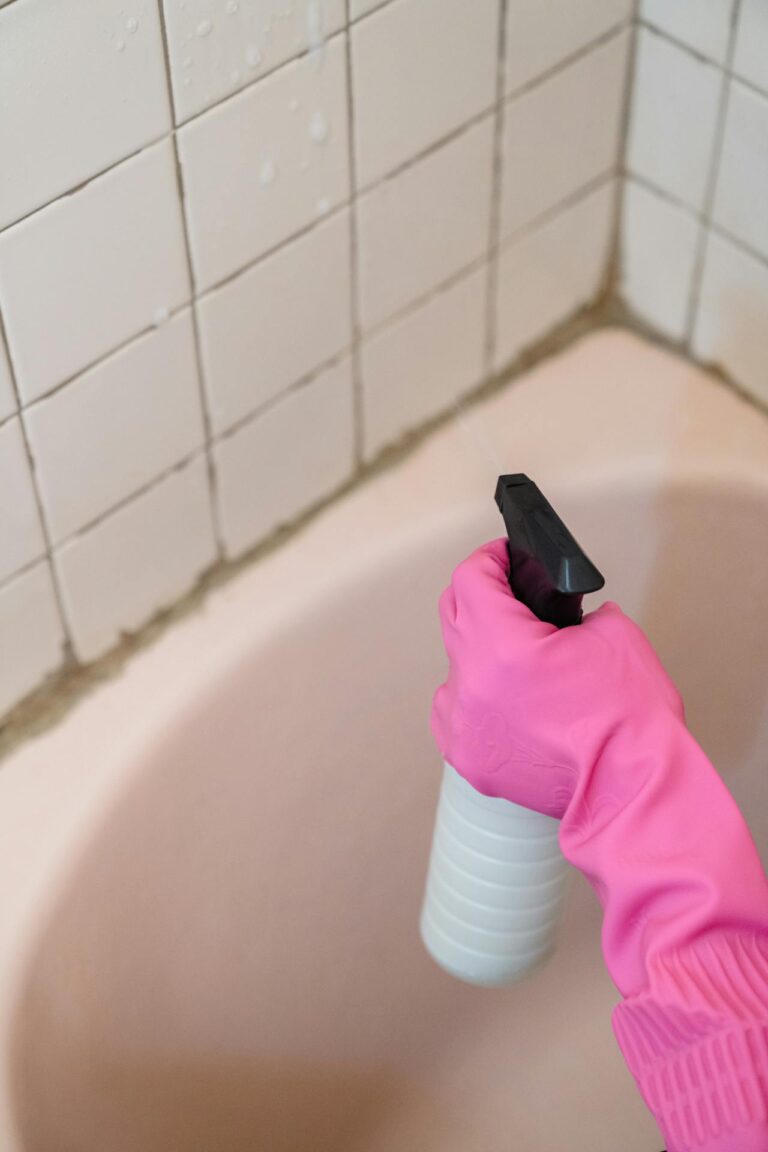Burnt sugar can turn a simple cooking session into a challenging cleanup task. The caramelized residue bonds to metal surfaces and resists regular dish soap.
Fortunately, removing burnt sugar from pans doesn’t require specialty products. A few household staples and the right technique can help dissolve even the most stubborn sugar stains.
Here are eight practical methods to tackle burnt caramel cleanup and restore your cookware.

Why Burnt Sugar Sticks So Stubbornly to Pans
Sugar undergoes a chemical transformation when it burns. The molecules break down and recombine into a hard, glass-like substance that bonds tightly to pan surfaces.
This caramelized sugar creates a water-resistant coating. Regular scrubbing often just scratches the surface without breaking down the residue underneath.
Understanding this helps explain why certain cleaning approaches work better than others for sugar residue removal.
1. Hot Water Soak Method for Burnt Sugar Removal
Fill the affected pan with hot water immediately after noticing the burn. The heat can help soften the caramelized sugar before it fully hardens.
Let the pan soak for 30-60 minutes. Add a drop of dish soap to help break surface tension.
The longer you wait to address burnt sugar, the harder it becomes to remove. This simple soak works well when done right away, before the residue cools and sets completely.
2. Boiling Water Technique to Dissolve Burnt Sugar
Pour enough water into the pan to cover the burnt areas completely. Place the pan on the stove and bring the water to a rolling boil.
Let it boil for 5-10 minutes. The combination of heat and water can help dissolve the sugar bonds.
Use a wooden spoon to gently scrape the bottom while the water boils. The loosened residue should start lifting away from the pan surface.
3. Baking Soda Paste for Stubborn Burnt Sugar Stains
Mix baking soda with just enough water to form a thick paste. Spread this mixture over the burnt sugar areas and let it sit for 15-20 minutes.
The mild abrasiveness of baking soda combined with its alkaline properties can help break down caramelized residue. Scrub gently with a non-scratch sponge.
This method works particularly well on stainless steel and non-stick surfaces. Baking soda won’t scratch most cookware when used with reasonable pressure.
4. Vinegar Boil Method to Remove Burnt Sugar From Pans
Pour equal parts water and white vinegar into the pan. The mixture should cover all burnt areas by at least an inch.
Bring the solution to a boil and let it simmer for 10-15 minutes. The heat and water can help soften and rehydrate the hardened sugar residue.
Turn off the heat and let the pan cool slightly. The burnt sugar should wipe away much easier after this treatment.
5. Cream of Tartar Solution for Pan Cleaning
Add two tablespoons of cream of tartar to a pan filled with water. This mild acid works similarly to vinegar but with a gentler approach.
Bring the mixture to a boil and simmer for 10 minutes. Let it cool before attempting to scrub the burnt sugar away.
Cream of tartar can be especially useful for copper or aluminum pans. It tends to be less harsh than some other acidic cleaners.
6. Dryer Sheet Trick for Burnt Caramel Cleanup
Place a dryer sheet in the pan and cover it with warm water. Let it soak overnight for optimal results.
The conditioning agents in dryer sheets can help soften burnt-on food, including caramelized sugar. This method requires minimal effort but takes more time.
In the morning, remove the dryer sheet and wipe the pan. Most burnt sugar residue should come off with gentle pressure.
7. Salt Scrub Method to Clean Burnt Pans
While the pan is still slightly warm, sprinkle coarse salt over the burnt areas. Add a small amount of water to create a paste.
Use a cloth or sponge to scrub in circular motions. Salt provides gentle abrasion without damaging most pan surfaces.
This technique works well for cast iron or stainless steel. Avoid using it on non-stick coatings, as the salt crystals might cause scratches.
8. Dish Soap and Hot Water Combination for Sugar Residue Removal
Fill the pan with very hot water and add several squirts of grease-cutting dish soap. Let it soak for at least an hour.
The surfactants in dish soap can help penetrate and loosen burnt sugar bonds. For extra effectiveness, add the pan back to the stove and bring the soapy water to a gentle simmer.
Scrub with a non-abrasive sponge once the water cools. This straightforward method often works when the burn isn’t too severe.
What to Avoid When Cleaning Burnt Sugar From Cookware
Don’t use metal scrubbers on non-stick pans. They can damage the coating and create a surface where food sticks more easily in future use.
Avoid putting a hot pan directly under cold water. The temperature shock can warp certain metals or cause non-stick coatings to separate from the base.
Steel wool should be reserved for heavy-duty cookware only. It can scratch stainless steel and ruin more delicate pan finishes completely.
Don’t skip the soaking step when dealing with severe burns. Aggressive scrubbing without softening the residue first can scratch your pans unnecessarily.
Questions & Answers About Removing Burnt Sugar
How do you get burnt sugar off a stainless steel pan?
Boiling a mixture of water and vinegar in the pan tends to work well for stainless steel. The acid helps dissolve the caramelized sugar without damaging the metal surface.
For particularly stubborn spots, a baking soda paste can provide gentle abrasion. Stainless steel can handle more aggressive cleaning than non-stick surfaces.
What dissolves burnt sugar fastest?
Boiling water is often one of fastest solution for burnt sugar removal. The heat breaks down the sugar bonds quickly, especially if you catch the burn early.
Can you use baking soda on burnt sugar?
Yes, baking soda works effectively on burnt sugar stains. Its mild abrasiveness and alkaline nature help break down caramelized residue.
Mix it with water to form a paste for good results. This method is safe for most pan types, including non-stick surfaces when used gently.
Will vinegar remove burnt sugar from cookware?
Vinegar can help remove burnt sugar when heated with water. The boiling action softens and rehydrates the hardened sugar layer, making it easier to lift away.
Boil a mixture of equal parts water and vinegar in the affected pan. Let it simmer for 10-15 minutes for optimal results.
How long should you soak a pan with burnt sugar?
Soaking time depends on the severity of the burn. Light burns might only need 30 minutes, while severe caramelization can require overnight soaking.
Hot water works faster than cold. Adding dish soap, vinegar, or a dryer sheet to the soak can improve effectiveness significantly.
Can burnt sugar damage pans permanently?
Burnt sugar rarely causes permanent damage to quality cookware. The residue itself is removable with patience and the right technique.
However, aggressive scrubbing with metal tools can scratch pan surfaces. This creates texture where food might stick more easily in the future.
Is it safe to use burnt pans after cleaning?
Once you’ve completely removed the burnt sugar residue, pans are safe to use again. Make sure no charred material or cleaning product remains on the surface.
Check for any warping or coating damage. If the pan structure looks intact after cleaning, it should perform normally.
How can you prevent sugar from burning in pans?
Lower heat settings can help prevent sugar from burning during cooking. Sugar caramelizes quickly, so constant attention matters.
Keep stirring when working with sugar-based recipes. Using a heavy-bottomed pan can also help distribute heat more evenly and reduce hot spots.
Get Your Pans Clean and Ready for the Next Recipe
Removing burnt sugar from pans doesn’t have to mean hours of scrubbing or ruined cookware. These methods can help you tackle even stubborn caramelized residue with items you likely already have at home.
The key is choosing the right approach for your pan type and acting relatively quickly. With a little patience and the proper technique, your cookware can look clean again.
Now it’s your turn to try these methods and see which works well in your kitchen!






